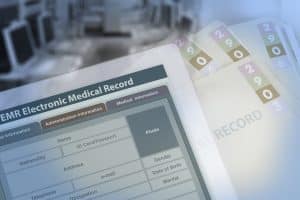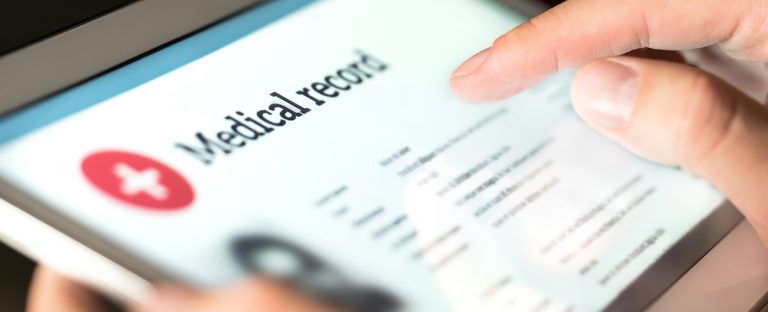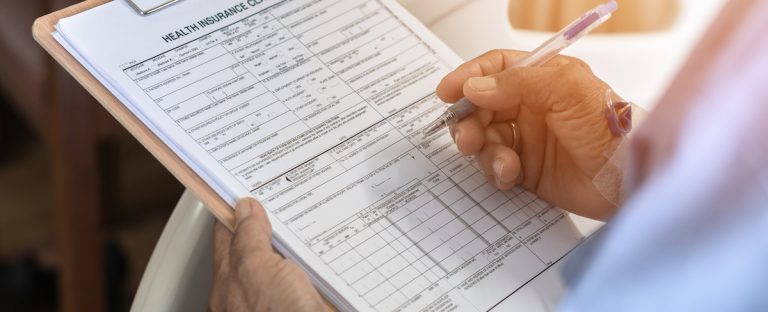In the world of billing insurance, insurers improperly issue medical necessity denial claims on the basis of treatments being not medically necessary quite frequently. This is especially true in cases where you are billing insurance for acupuncture, medical massage, or chiropractic treatments. Sometimes such denials are a mistake, but all too often, these denials by insurers are intentional and intended to avoid coverage for treatments.
Since these persistent denials exist, it is important for you to understand how to fight a medical necessity denial in order for your patient to receive all of the coverage they are entitled to. Learn more about how to appeal a medical necessity denial claim and the medical appeal letter template you should use for your best chances of revoking the denial.
Is Acupuncture Covered by Insurance?

Healthcare coverage for integrative medicine treatments like acupuncture and massage therapy has come a long way in the United States. Nowadays, it is common practice to complement traditional health care with other modalities like massage and acupuncture. However, not all health insurance plans cover these services, and those that do vary when and what they cover. On top of this, the insurance industry makes the billing process for acupuncture and other holistic treatments difficult and complicated. While some insurance plans will allow these sorts of treatments for a wide variety of medical conditions, others will have more limited plans.
Medicare has special requirements for acupuncture; recently in January 2020, the Centers for Medicare and Medicaid Services (CMS) announced their decision to cover acupuncture for chronic low back pain. Although the update was especially important, as it marks the first time acupuncture codes can be reimbursed by Medicare, the additional requirements made it impossible for most licensed acupuncturists to take advantage of it.
Unfortunately for holistic practitioners, the insurance industry makes billing for acupuncture and massage complicated with a variety of accompanying regulations and requirements. The majority of covered acupuncture services that need to be billed to insurance fall under four essential acupuncture CPT codes and two medical massage codes. Like other similar therapy-based practices, integrative health practitioners bill their services according to Current Procedural Terminology (CPT) codes. Each code is considered a billable unit used to track what treatments have been administered.
Acupuncture and massage services are always billed in 15-minute increments. For instance, in acupuncture, you will use one code for the initial 15 minutes of service and then a separate code for additional units of time. If you include electronic stimulation in your treatment, your codes will vary as well.
Evaluation and management services, or office visits, may be billed by acupuncture physicians on the initial patient evaluation and periodic follow-up evaluations, typically every 30 days or every sixth visit. However, it is not appropriate to bill these codes every time the patient receives acupuncture treatments, as acupuncture CPT codes 97810, 97813, 97811, and 97814 all include evaluation and management done as part of the overall daily treatment.
Are Chiropractic Treatments Covered by Insurance?

Just as with acupuncture, chiropractic treatments used to be rarely covered by insurance. This has since changed; most health insurance plans now cover chiropractic treatments due to the holistic practice’s positive reputation among many Americans for effective treatments for neck and back pain. In fact, chiropractors see an estimated 35 million people every year in the United States alone. Despite its popularity, insurance may only pay a certain amount of chiropractic treatments or under certain circumstances just as with other holistic disciplines.
Medicare will cover chiropractic manipulation of the spine for back pain management, but there are additional caveats just as with acupuncture Medicare coverage. To qualify for Medicare reimbursement, the patient must have active back pain and seek out chiropractic care that corrects this problem. Any chiropractic services administered as maintenance or preventative will not be covered, as well as any massage therapy or X-rays.
As an insurance billing company, Holistic Billing has new providers contacting us daily about how to start medical billing. The first step is to get a National Provider Identifier number otherwise known as your NPI number. However, many holistic practices are unaware of how to apply for an NPI.
Luckily, the application process for getting an NPI number is pretty straightforward. Follow this guide and the NPI application checklist to help your holistic practice obtain its NPI!
What is an NPI?
A National Provider Identifier, or NPI, is a 10-digit identification number issued to healthcare providers in the U.S. by the Centers for Medicare and Medicaid Services. Your NPI will not change, even if your address, taxonomy, or name changes. Although every NPI is unique, it does not carry specific information about you, such as the state where you practice or your specialization.
The NPI must be used in place of other provider identifiers, such as a Provider Transaction Access Number (PTAN), Online Survey Certification & Reporting (OSCAR), and National Supplier Clearinghouse (NSC) when used in HIPAA standard transactions. For reference, HIPAA standard transactions are exchanges involving the transfer of health care data between two parties for specific purposes.
Why Does Your Holistic Practice Need an NPI?
Your holistic practice will need to apply for an NPI if you are a HIPAA-covered health care provider or if you bill insurance for your services. If your practice applies for enrollment, you must have an NPI. Any enrollment application without an NPI will be rejected.
An NPI also carries other benefits as well, such as simplifying electronic transmission of HIPAA standard transactions and efficient coordination of benefit transactions. However, it’s important to know that applying and receiving an NPI will not ensure you’re Medicare credentialed or replace your current insurance enrollment.
3 Options for Getting an NPI Number
Your holistic practice can get an NPI Number in one of three ways, depending on your preference.
Option 1: Apply Through a Web NPI Number Application
You can apply for an NPI through a web-based application. Visit the National Plan and Provider Enumeration System (NPPES) website. Individual providers must create a username and password through the Identity & Access Management (I&A) System, and log in to NPPES using that username and password.
Option 2: Apply Through a Mail Paper Application
You can complete, sign, and mail a copy of the application (Form CMS-10114, “NPI Application/Update Form”) to obtain an NPI number to the NPI Enumerator address listed on the form. To request a hard copy application through the NPI Enumerator, call 1-800-465-3203 or TTY 1-800-692-2326, or send an email to customerservice@npienumerator.com.
Option 3: Apply Through an EFIO
The final option you can apply for an NPI would be to permit an Electronic File Interchange Organization (EFIO) to submit application data through a bulk enumeration process. For more information on this option, check out the CMS website here.
NPI Application Checklist: How to Fill out the NPI Application
Your holistic practice can use this NPI application checklist to ensure that you have all the correct information when filling out the NPI number application from the CMS.

- Reason for Submitting NPI Number Application Form
- Entity Type (Are you an individual or an organization that renders health care?)
- Identifying Information (including that of sole proprietorships and incorporated individuals)
- Organization Name(s)
- Correspondence Mailing Address Information
- Business Practice Location Information
- Medicaid Identification Number (if applicable)
- Other (Non-Medicare) Provider Identification Numbers
- Provider Taxonomy Code(s)
- Individual Practitioner’s Signature
- Authorized Official’s Signature for the Organization
- Contact Person’s Information
The world of insurance billing is complex, and even more so for holistic practices. Understanding when to use the right acupuncture billing codes and procedures is essential to any successful medical practice – whether holistic or traditional. Accurate coding and billing practices ensure a streamlined reimbursement process so your practice can get paid and deliver the best care to your patients.
As a billing company focused on holistic healthcare providers, Holistic Billing is an expert in the world of acupuncture billing CPT codes. In any given year, roughly half of our new clients have never billed insurance before they started with Holistic Billing Services, so we are quite accustomed to their most frequently asked questions. Find the answers to many of the most common questions about Acupuncture CPT codes and billing practices below!
While a medical record audit is a lengthy process, it’s a necessary one to ensure your practice is as efficient, organized, and profitable as possible. Clinical documentation in medical records is crucial to delivering the most accurate care to patients, and disorganized medical records can easily hinder this. With medical record auditing, your holistic practice can determine areas that need attention before they result in fraudulent claims and billing activities.
Although medical records audits are necessary preventative measures for both conventional and holistic medical practices, they can be complex and time-consuming. Follow this guide for tips about how to have a thorough and efficient medical record audit to help your holistic practice be as successful as possible.
What is a Medical Record Audit?
Just like any conventional audit, a medical record audit is a process that includes internal or external reviews of what processes are being conducted accurately and what needs to be improved. This includes reviews of medical billing and coding accuracy, procedures, policies, and any other components that affect the efficiency and effectiveness of detailed documentation in your practice.
Medical record auditing is a preventative measure to catch potential errors that can result in liabilities and investigations. For example, these reviews can catch overlooked compliance issues that could impact your bottom line, your practice’s reputation, and the level of care you deliver to patients.
Why is Auditing Medical Records Important For Your Medical Practice?
The benefits of conducting medical record audits are numerous and should be reviewed regularly as a preventative measure at least once a year. Besides checking for compliance and liability errors, a medical record audit can also catch inefficiencies that are costing your holistic practice money.
According to the AACP, some of the benefits of medical record auditing include:
- To determine outliers before large payers find them in their claims software and request an internal audit be done.
- To protect against fraudulent claims and billing activities.
- To reveal whether there is a variation from national averages due to inappropriate coding, insufficient documentation, or lost revenue.
- To help identify and correct problems before insurance or government payers challenge inappropriate coding and conduct governmental investigations.
- To remedy undercoding and code overuse and to bill appropriately for documented procedures.
- To identify reimbursement deficiencies and opportunities for appropriate reimbursement.
- To stop the use of outdated or incorrect codes for procedures.
Auditing is especially important to catch mistakes that may otherwise go undetected and impact your bottom line. A medical records audit can also protect your holistic practice against fraudulent claims and compliance issues. If your practice is consistently submitting inaccurate coding, it could result in lengthy reimbursement delays, investigations, and penalties that cost you both money and time.
Four Tips for a Auditing Medical Records Successfully

When deciding to audit medical records in your holistic practice, the process can be intimidating due to its complexity and lengthy documentation. However, there are some tips you can implement to help speed up the process so you can achieve both an accurate and efficient medical record audit experience! Here are four simple tips to follow for a more successful medical record audit in your holistic practice:
The Consolidated Appropriations Act, 2021 (the “CAA”), signed into law on December 27, 2020, is the second-largest federal stimulus package of 2020, following the CARES Act. The CAA provides $900 billion in COVID relief and reserves $284 billion for small businesses through a second round of Paycheck Protection Program (“PPP”) forgivable loans, or as some are calling it, PPP2. But relief for businesses does not end at PPP loans. The CAA also provides additional tax deductions and expands the Employee Retention Credit. The SBA published its Interim Final Rules on January 6 (click here to access the IFR rules), implementing the CAA. Like PPP round 1, the SBA will be publishing applications, guidance and FAQs in the coming days, but in the meantime, this article provides an overview of PPP2 and relevant benefits of the CAA.
Reopening of PPP Loan Program
The CAA reopens access to the original PPP for businesses who qualified for a loan but did not receive a loan, and also for businesses who returned all or a portion of the loan. For a borrower who returned all or part of a PPP loan, it may reapply for an amount equal to the difference between amount retained and maximum amount applicable; and for a borrower who did not accept full amount of the loan, it may request modification to increase to the maximum amount applicable.
Second Draw Loans (PP2)
Most notably, the CAA allows for eligible small businesses who took PPP loans to apply for another loan of up to $2 million. To be eligible for PPP2 “second draw loans,” the borrower must:
- Have 300 or fewer employees; and
- Have suffered a 25% or higher reduction in gross receipts during any calendar quarter in 2020 compared to the same quarter in 2019; and
- Have used or will use the full amount of their first PPP loan.
Eligible businesses with multiple locations may qualify for PPP2 provided they employ less than 300 people in each location. SBA size standards still apply, and applicants must still aggregate applicable affiliates when determining if it qualifies as a “small business.” The original waiver of affiliation rules still apply as well. CAA affirms eligibility to certain organizations such as churches and other religious organizations, housing cooperatives with less than 300 employees, certain news organization, but also disqualifies certain organizations such as those business not in operation before February 15, 2020, publicly traded companies, and entities receiving Shuttered Venue Operating Grants under the CAA, to name a few.
To determine amount of the PPP2 loan, an eligible recipient may receive up to 2.5 times the sum of their average monthly payroll costs (capped at $2 million), but entities assigned to NAICS code 72 (Accommodations and Food Services) may receive up to 3.5 times average monthly payroll.
Additional Eligible Expenses and Flexible “Covered Period” for PPP and PPP2
Forgiveness of PPP loan funds still depend on whether the borrower spends the PPP funds for allowable costs during the “covered period.” However, the CAA now allows borrowers to choose a covered period that is at least eight weeks and no more than 24 weeks from the loan origination and expands authorized costs. While 60% of forgivable funds must be spent on payroll, the CAA allows borrowers to use PPP funds for additional expenses. In addition to payroll, rent, utilities, and covered mortgage interests, the CAA authorize PPP funds to be used for:
- Operation Expenditures: defined to include a “payment for any business software or cloud computing service that facilitates business operations, product or service delivery, the processing, payment, or tracking of payroll expenses, human resources, sales and billing functions, or accounting or tracking of supplies, inventory, records and expenses.”
- Property Damage Costs: “a cost related to property damage and vandalism or looting due to public disturbances that occurred during 2020 that was not covered by insurance or other compensation.”
- Supplier Costs: meaning an expenditure made “to a supplier of goods for the supply of goods that (A) are essential to the operations of the entity at the time at which the expenditure is made; and (B) is made pursuant to a contract, order, or purchase order…in effect at any time before the covered period;…or with respect to perishable goods, in effect before or at any time during the covered period.”
- Covered Worker Protection Expenditures: defined to mean “operating or capital expenditure to facilitate the adaptation of the business activities of an entity to comply with requirements established or guidance issued by CDC, HHS, OSHA since March 1, 2020” and until the end date of the national emergency. Examples include PPE, physical alterations to facilities such as barriers, health screening capability, etc.
- CAA clarifies that group insurance payments are considered an allowed payroll cost.
Simplified Loan Forgiveness and Audits
For loans under $150,000, the SBA will provide for a simplified forgiveness application, which is anticipated to be one page and only requires the borrower to provide number of employees the borrower was able to retain because of the loan, total amount of loan spent on payroll, and total loan amount. Although currently, SBA is using Form 3509 and Form 3510 Loan Necessity Questionnaires for loans in excess of $2 Million, the CAA requires the SBA to submit a forgiveness audit plan and reports of covered loans.
Tax Benefits
The CAA expands eligible tax benefits for PPP loan recipients in several important ways.
First, the CAA confirms that eligible business expenses paid with PPP loan proceeds are tax-deductible even if the PPP loan is forgiven. The CARES Act originally provided that forgiveness of a PPP loan would not result in the forgiven amount being included in the taxpayer’s gross income (as would normally be the case with debt forgiveness). The IRS issued Revenue Ruling 2020-27 and Notice 2020-32, in which it took the position that, for expenses paid with a PPP loan that was forgiven, the taxpayer could not also take a business expense deduction because to do so would result in the taxpayer receiving a double tax benefit. The CAA overrides the IRS’s position and explicitly provides that no deduction shall be denied because a PPP loan is forgiven. In response to the CAA, the IRS promptly issued Revenue Ruling 2021-2 in which it declared its prior Revenue Ruling 2020-27 and Notice 2020-32 obsolete and confirmed that otherwise deductible business expenses will be deductible even if they were paid with PPP loan proceeds and the taxpayer’s PPP loan is forgiven. Additionally, such taxpayer’s tax basis in its assets will not be reduced as a result of the forgiveness of the PPP loan.
Second, the CAA significantly expanded the CARES Act’s employee retention tax credit, which employers may now claim even if they receive a PPP loan. However, employers may not both receive an employee retention tax credit and seek PPP loan forgiveness for the same wages. An eligible employer that received a PPP loan and paid qualified wages which exceeded the amount of the forgiven PPP loan used to pay wages may now claim the employee retention tax credit retroactively. We expect guidance from the IRS regarding how employers may retroactively claim the credit.
Additionally, effective January 1, 2021, the following key changes expand the availability of the tax credit:
- Qualified wages paid through June 30, 2021 are now eligible for the credit (previously wages had to be paid before January 1, 2021).
- The credit will be available to businesses: with operations that are either fully or partially suspended by a COVID-19 governmental order for the time period in which the order is in force; or with gross receipts less than 80% of gross receipts for the same quarter in 2019 (the CARES Act previously required gross receipts to be less than 50% of gross receipts for the same quarter in 2019 to trigger initial eligibility for the credit).
- The available credit will increase to 70% of qualified wages plus the associated employer-paid health plan expenses (the CARES Act previously provided for a credit of 50% of qualified wages and health plan expenses).
- The maximum tax credit amount is increased to $7,000 per employee for each of the first two quarters of 2021 for a possible credit of up to $14,000 per employee in 2021. Further, the 2021 tax credit is available even if the employer received the $5,000 maximum credit for the same employee in 2020.
- An eligible employer with 500 or fewer employees may claim the credit for wages paid to all employees even if the employees are working (the CARES Act previously allowed only employers with 100 or fewer employees to take the credit for wages paid to employees who were actively working and permitted employers with greater than 100 employees to take the credit only for wages paid to employees who were not actively working). Employers with more than 500 employees are still limited to claiming the credit only for wages paid to employees who are not working due to the reason the employer qualifies for the credit (i.e., governmental order or reduction in gross receipts). Note that the employer aggregation rules under Internal Revenue Code sections 52 and 414 continue to apply for purposes of determining the number of employees an employer has.
- Certain governmental employers are now eligible for the credit if they otherwise meet the eligibility criteria: public colleges or universities; organizations with a principal purpose of providing medical or hospital care; and certain organizations chartered by Congress (such as federal credit unions).
Applying for Loans
We anxiously await the publication of SBA’s second draw application form, SBA 2483-SD and the reopening of the PPP loan program. Currently, the CAA provides that the PPP and PPP2 loans will be funded through March 31, 2021, and applications will continue to be made through qualified PPP lenders. We anticipate that borrowers will have to make similar if not identical certifications when applying for the second round of PPP loan. New and previous borrowers should consult with their attorneys, tax advisors, and lenders to determine if they qualify for a forgivable PPP loan.
Holistic Billing Services is ready to help these practices resume operations and relieve the pressure of billing and coding so they can tend to their patients in these difficult times. To find out how we can get your acupuncture, massage therapy, or chiropractic practice back up to speed, contact our experienced team today.
As a holistic practice, you want to deliver the best treatments of holistic medicine to your patients – while also ensuring you are paid! To service your patients and grow your holistic business, however, you will want to consider provider credentialing as an in-network provider to bill insurance plans. To be approved, you must meet the numerous medical credentialing requirements for your practice. Besides meeting the requirements, you also must ensure that all the complicated paperwork is filled out accurately and the right documentation is gathered.
Don’t be discouraged, however! There are ways to ensure you’re approved the first time you apply for medical credentialing. Here are some considerations to keep in mind so you have everything you need to know before starting the insurance billing credentialing process.
What is Medical Credentialing?
The process of verifying a healthcare provider’s qualifications for administering care to patients to bill insurance providers, medical credentialing is necessary to receive reimbursements for services. Medical credentialing is a common process for most insurance billing, including many commercial insurance companies, medical groups, surgery centers, or government plans like Veterans Affairs, Medicare, and Medicaid.
Generally, the medical credentialing process involves various applications, forms, and documentation, though the exact requirements vary on the insurance provider. Typically, the provider credentialing process must verify that the medical practice’s documents are current and valid. This can include medical licenses, malpractice insurance, DEA, board certifications, and any other additional information necessary to complete the credentialing process.
What are the Common Challenges in the Medical Credentialing Approval Processs?
Although the medical credentialing process is essential to receive reimbursements, there are many potential issues – and ensuing consequences – that can occur. Since provider credentialing is integral to generate revenue, it’s one of the most important processes for a holistic practice. However, data errors, accidental omissions, or any other hiccups in the process can result in incomplete credentialing and possible financial complications.
Medical practices – holistic or not – lose revenue and waste valuable time and money with common medical credentialing mistakes. So, being aware of the common challenges in the medical credentialing approval process can help avoid these costly errors!
Incomplete Applications
A common mistake that plagues medical practices, sending incomplete provider enrollment applications can set back the provider credentialing process for weeks, if not months. The general application for credentialing requires an extensive amount of paperwork and documentation – all that needs to be filled out correctly. Failure to complete the provider credentialing application accurately can result in lengthy reimbursement delays and denied claims that can negatively impact your bottom line.
While some mistakes are inevitable, ensuring qualified credentialing helps eliminate the margin for human error, saving your holistic practice time and money.
Lack of Organization
An organized practice can lead to inaccurate provider credentialing applications, lost paperwork, or extra time spent on the entire process as a whole. Having all your important paperwork and data where it should be and gathered will avoid any issues in the future, such as claim denials or inaccurate physician contact information.
Proper organization can also make the entire medical credentialing process as efficient as possible, so your holistic practice can focus on the day-to-day operations of delivering services to patients and receiving payments.
Not Updating Information
Even after healthcare providers are credentialed, all provider contact information needs to be kept up to date. Depending on the state in which you practice, licenses and credentials need to be renewed regularly. During the re-credentialing process, having up to date information on every individual practicing, including licenses and contact information, will be important for an efficient and accurate process for your holistic practice.
Besides making the process exponentially easier, keeping up to date with physician licenses will also help avoid potential bad patient outcomes if a physician is practicing without an updated license.
Medical Credentialing Checklist for Holistic Practices
To avoid possible claims denials and lengthy issues, you want to make sure your provider credentialing is as accurate the first time around as possible. Since the medical credentialing process can be lengthy and full of complicated documentation, a checklist can help ensure no important data is missing.
Here are some medical credentialing checklists for holistic practices to help provide an accurate and speedy credentialing outcome! Remember that, depending on the state in which you practice, you may have additional medical credentialing requirements that are not fully covered by the process.
Massage Therapy Credentialing

- Know your state requirements for holistic practices
- Provide your NPI (National Provider Identification)
- List all relevant professional licenses
- Provide any evidence of education or training
- Include all board certifications
- Include DEA certifications
- Malpractice Insurance, if applicable
- Current Competence to Practice certifications
Chiropractic Credentialing

- Know your state requirements for chiropractic holistic practices
- Get your NPI (National Provider Identification)
- Licensure: All practitioners must have and maintain a current, unrevoked, unsuspended, and unimpaired license to practice chiropractic in the state where their holistic practice is
- List education or training
- Practitioners must also complete and maintain all continuing education hours as required
- If your practice performs X-rays, make sure to follow radiographic guidelines and x-ray criteria
- Include all board certifications
- Include DEA certifications
- Malpractice Insurance, if applicable
- Current Competence to Practice certifications
Acupuncture Credentialing

These are essentially the basics for acupuncture credentialing in most states in the District of Columbia.
- Graduated from an academic program with U.S. Department of Education recognized accrediting agency
- Passed relevant licensing or certification examinations, or is nationally board certified by the NCCAOM®
- Holds a license in the appropriate jurisdiction
- Education or training
- Include all board certifications
- Include DEA certifications
- Malpractice Insurance, if applicable
- Current Competence to Practice
Turn to Holistic Billing Service’s Medical Credentialing Services to Get Approved for a Network the First Time Around!
Medical credentialing for holistic practices can be a lengthy and complicated process, but one that is an option to receive reimbursements from insurance companies as an in-network provider. An efficient and accurate provider credentialing service is essential for a healthy bottom line, but the process can be full of complicated paperwork that needs to be filled out precisely. By outsourcing your medical credentialing to professionals, you can trust that your credentialing is filled out correctly – the first time around!
At Holistic Billing Services, you can trust our team of experienced billing and coding experts to understand the unique needs of holistic practices and can help you take steps to accelerate your revenue cycle management and avoid claim denials. Since we deal exclusively with holistic healthcare practices like acupuncture, massage therapy, and chiropractic treatments, we are familiar with the medical credentialing approval process and how it affects your business. For any questions about holistic billing, feel free to contact our team today, and let us know how we can help your holistic practice!
On January 21st, 2020, the Centers for Medicare and Medicaid Services (CMS) announced their decision to cover acupuncture for chronic low back pain. This is defined as localized pain in the lower back that persists for more than three months. The decision was momentous because it marked the first time acupuncture services could be reimbursed by Medicare.
Unfortunately, the decision also created a great deal of confusion. While Medicare now covers acupuncture services for lower back pain, there are a number of important conditions that must be met for treatment to be eligible for acupuncture billing. This makes many wonder what factors are considered for Medicare acupuncture coverage.
For example, the treatment must be administered under the “adequate supervision” of a physician, physician assistant, or nurse practitioner. This may sound simple enough, but the language used by the CMS ruling to define who may administer that treatment is deceptively complex.
Does Medicare Pay for Acupuncture?
The simple answer? Medicare doesn’t cover acupuncture for any condition other than chronic low back pain.
There are also additional acupuncture insurance billing requirements to follow, although the ruling has created the impression that any licensed acupuncturist can bill services to Medicare as long as they administer treatment in the presence of a physician, physician, assistant, or nurse practitioner. However, this is not an accurate interpretation of the CMS decision.
The ruling clearly states that a provider must be an MD/DO, physician assistant, nurse practitioner, clinical nurse specialist, or auxiliary personnel. They must also “possess a master’s or doctoral-level degree in acupuncture or Oriental Medicine from a school accredited by the Accreditation Commission on Acupuncture and Oriental Medicine (ACAOM)” and hold a “current, full, active, and unrestricted license to practice acupuncture” in the state.
Some holistic practices have seized upon the category of “auxiliary personnel” and taken it to mean something akin to an independent contractor. While an independent Licensed Acupuncturist may qualify as auxiliary personnel, the CMS ruling is quite clear on how this category can administer treatment:
“Auxiliary personnel furnishing acupuncture must be under the appropriate level of supervision of a physician, physician assistant, or nurse practitioner/clinical nurse specialist required by regulations…”
The key phrase here is “appropriate level of supervision,” which is typically interpreted under Medicare guidelines to mean that the person providing the service is “incident to” a physician’s professional services or hospital services. Put simply, means that the acupuncturist is administering treatment on behalf of the physician as part of the physician’s practice. All auxiliary personnel must, therefore, be supervised by the authorized Medicare provider.
Following this logic, then, auxiliary personnel cannot directly bill Medicare for any services rendered because they are not the registered Medicare provider. The supervising physician may bill Medicare for acupuncture treatments for lower back pain (with some restrictions), but the acupuncturist cannot do so themselves.
Furthermore, since licensed acupuncturists are not currently included on the list of Medicare provider groups, there is currently no way for them to directly bill Medicare for reimbursement. Hypothetically, if they were added to the list of qualified provider groups, they would be able to bill for eligible services (currently chronic lower back pain).
Unfortunately, an act of Congress would be necessary to expand the list of provider groups. Despite several attempts to add acupuncturists to the list of Medicare providers over the past 40 years (most recently with the Acupuncture for Heroes and Seniors Act, introduced in 2015 and reintroduced in 2017 and 2019), none of them have received a committee hearing in Congress.
Current State of Medicare Acupuncture Coverage
According to Medicare, back pain can be covered if it meets the following conditions:
- It has lasted 12 weeks or longer.
- There is no known cause (not related to cancer that has spread, inflammatory, or infectious disease).
- Pain not associated with surgery or pregnancy.
As of current Medicare acupuncture coverage regulations, no other sources of back pain will be covered. However, it’s not that simple. Since Licensed Acupuncturists are still not included on the list of Medicare provider groups, most acupuncture practices will be unable to deliver Medicare-approved acupuncture until an act of Congress changes the current verbiage to include them.
Additionally, Medicare guidelines state that a Medicare-approved acupuncture treatment must be no more than 45 minutes. Insurance companies may be inclined to decline payments if they receive an insurance claim from a provider for a 60-minute treatment.
While this CMS decision has made progress, it still does not serve the acupuncturing community as effectively as it may appear since the greater majority of Licensed Acupuncturists cannot deliver services covered by Medicare still unless they are working for a physician.
Acupuncture Medicare Fee Schedule
For Medicare-covered acupuncture, guidelines stipulate that up to 12 visits in the first 90 days may be covered for Medicare beneficiaries.
Up to eight additional sessions may be covered for patients who demonstrate improvement, but no more than 20 acupuncture treatments may be administered annually. Treatment must also be discontinued if the patient is not improving or is regressing.
The current rules cover the following acupuncture treatment codes (at the current Medicare national average fee schedule)
- 97810 ($37.89): Acupuncture, one or more needles, without electrical stimulation, initial 15 minutes of personal one-on-one contact with the patient.
- 97811 ($28.87): Each additional 15 minutes of personal one-on-one contact with the patient, with re-insertion of needles.
- 97813 ($42.22): Acupuncture, one or more needles, with electrical stimulation, initial 15 minutes of personal one-on-one contact with the patient.
- 97814 ($34.65): Each additional 15 minutes of personal one-on-one contact with the patient, with re-insertion of needles.
- 20560 ($26.71): Services with needle insertion(s) without injection(s) of 1 or 2 muscle(s).
- 20561 ($39.70): Services with needle insertion(s) without injection(s) of 3 or more muscle(s).
The Future of Medicare Billing for Acupuncture Services
While most acupuncture practitioners are currently ineligible to provide Medicare-covered services for patients, there are movements in place to change the verbiage surrounding acupuncture in the Social Security act to include more of the acupuncturing community.
The American Society of Acupuncturists is currently at work drafting a bill for Congress and gathering support to make a change to the existing guidelines. In early 2021, their goal is to secure bipartisan support for the bill and organize acupuncturist advocacy campaigns to increase awareness of their bill. For more information, check out the plan here.
At Holistic Billing Services, we deal exclusively with holistic healthcare practices like acupuncture, massage therapy, and chiropractic treatment. Our team of experienced billing and coding experts understand the unique needs of holistic practices – such as acupuncturist practices – and can help you take steps to accelerate your revenue cycle management. For any questions about holistic billing, feel free to contact our team today and let us know how we can help your acupuncture practice.
As acupuncture insurance billing experts, we’ve been getting numerous questions from acupuncture providers reporting claim denials for 60-minute visits that used to pay without issues. Read on for our answer to this recently asked question!
Why Are My Acupuncture Visits Exceeding 45 Minutes Getting Denied?
|
Typically, commercial insurance companies peg their reimbursement rates and procedure protocols to the Centers for Medicare and Medicaid Services’ (CMS) published guidelines. It is common to find language in insurance contracts expressing reimbursement rates as a multiple or percentage of a CMS fee schedule. Historically, the coding guidelines and pricing did not affect the average acupuncture practitioner as CMS did not recognize the most frequently used acupuncture codes. However, on Tuesday, January 21st, 2020, CMS announced their decision to cover acupuncture for chronic low back pain, defined as localized pain in the lower back that persists for more than three months. CPT Codes and Associated Fee SchedulesHere are the CPT code, fee schedule, and max units for some of the most common acupuncture billing codes:
|
Additional CMS Updates for Acupuncture PracticesAlong with the announcement that acupuncture will now be covered for chronic low pain, CMS provided pricing and usage guidance for acupuncturists. As commercial payers and Veterans Affairs (Triwest and Optum) update their systems, many will follow the new pricing and Medically Unlikely Edits (MUE) values for acupuncture codes. Reduce Claims Denials in Your Acupuncture Practice with Holistic Billing!Due to these changes, insurance companies may start denying claims with acupuncture visits exceeding 45 minutes. If your insurance payer is adopting these policies, please ensure you’re adhering to these new billing requirements to avoid these denials. If you need assistance meeting billing requirements, turn to Holistic Billing Services! With our help, you can start seeing patients covered by insurance quickly and painlessly, no matter what type of acupuncture services you offer. After you’ve successfully enrolled in our easy-to-access portal for health insurance billing, you’re ready to get started generating revenue for your acupuncture services! Just send us the details of the treatment you’ve provided and our acupuncture billing experts take care of the rest. Have additional questions about medical credentialing for holistic practices, EHR, or medical billing for your acupuncture practice? Reach out to one of our experts today! |
The Centers for Medicare and Medicaid Services (CMS) released a series of changes in 2018 to the way E/M coding would be documented and billed for reimbursement. In partnership with the healthcare billing community, we reacted swiftly to the announcement, pointing out a series of potential problems that could arise when the changes went into effect for integrative medicine practitioners. In response, CMS formed a working group to consider another way of streamlining documentation burdens without focusing away from the delivery of medically necessary care. After about a year of negotiations and planning, we are happy to report that the changes were finally released to the public as part of the 2020 Physician Final Rule.
Understanding E&M Codes
An abbreviation for “evaluation and management,” E/M codes (alternatively known as E&M codes or sometimes referred to as “office visits”) are used by private practices to bill for a range of encounters that occur between patients and physicians, therapists, or practitioners. As a subset of CPT coding (specifically, CPT code range 99201-99499), E/M codes provide three pieces of information to insurance providers for reimbursement.
- Patient Type: Indicates whether the patient is new or established.
- The setting of Service: Indicates where the healthcare services were provided. For most holistic practices, this will be an office or outpatient setting.
- Level of Service Provided: E/M coding indicates the complexity of the health services delivered. A higher value code suggests a more complex service.
Under the original E/M coding structure, the level of service was determined by a complex calculation involving three elements: patient history, physical examination, and medical decision making. Each factor required the appropriate documentation to help indicate what appropriate level of service and then to bill accordingly. While holistic practitioners could use time as a determining factor when substantial counseling or care coordination was involved, that process required them to follow a very ambiguous set of guidelines.
How Are E/M Codes Changing in 2021?
Federal E/M coding guidelines will undergo a substantial change as of January 1, 2021. These changes will specifically affect coding for office and outpatient visits (CPT codes 99201-99215), making them extremely important for holistic practices to review.
New E/M Coding Rules for 2021
- New patient level 1 code (99201) is eliminated altogether, reducing the number of levels for new patient E/M visits to four. Established patients will retain the standard five coding levels.
- History and physical examination will no longer be determining factors when identifying the appropriate level of care; this doesn’t mean documentation requirements are going away altogether. Clinically relevant history and examinations must still be documented when necessary.
- Medical decision making or time can be used to determine the appropriate level of service.
- Adjustments are made to Medicare reimbursements for E/M codes. Since only a few holistic services are eligible for Medicare reimbursements, they may not impact every practice.
What Do E/M Changes Mean for Your Holistic Practice?
The overall goal of these changes was to emphasize medical decision-making and reduce the overall volume of paperwork associated with documentation. Still, the changes could have broader consequences for many practices. Most EHR systems overly rely on multiple bullet point entries to document patient history and log physical exam results. These tend to slow down patient visits and used because it was integral to the calculation used to determine the proper level of service code for E/M billing. Since the changes coming in 2021 will focus exclusively on time and medical decision-making factors to make this decision, the electronic medical records used by holistic practices should be simplified and updated to reflect the updates and speed up documentation.
Medical decision making for E/M coding is broken down into four different types, each reflected by a specific range of CPT codes:
- Straightforward (codes 99202 & 99212)
- Low (codes 99203 & 99213)
- Moderate (codes 99204 & 99214)
- High (codes 99205 & 99215) (not recommended for holistic and integrative medicine practices.)
When making a “medical decision,” physicians or therapists must consider three distinct elements pertaining to the patient:
- Number and complexity of problems being addressed.
- Amount and/or complexity of data to be reviewed and analyzed.
- Risk of complications and morbidity or mortality of patient management.
These three elements are rated according to four escalating levels that match the four types of medical decision making. The final E/M code is determined by examining each element’s level to assess the overall complexity of the decision. In order to qualify for a “Moderate” E/M code, for instance, at least two of the three elements must be at least “Moderate.” If one element is “Low,” one is “Moderate,” and another is “High,” the final E/M code would fall somewhere in the “Moderate” range (CPT codes 99204 & 99214).
This form of decision making obviously brings some degree of ambiguity, but CMS has done its best to give clear guidelines within each element to minimize confusion. A more practical approach is for practitioners to make E/M code selections based on the amount of time they spend with patients. These guidelines are much simpler than previous versions. For example, to bill for a “Moderate” encounter with an established patient (CPT code 99214), the interaction must last between 30 and 39 minutes.
Holistic practices will have to reassess their documentation and EHR systems to ensure they’re providing the information insurance companies are looking for when evaluating E/M billing codes. By far the biggest shift will be the transition from an emphasis on patient history and physical exams, which will hopefully reduce the overall level of documentation in these categories.
There is a lingering question about how reimbursement rates will be affected by the 2021 E/M code changes. While most holistic practices will be billing private insurers instead of Medicare, their reimbursement structure is often impacted by changes made to Medicare rates. The team at Holistic Billing will continue to monitor the situation as more information becomes available following the 2021 rollout.
Prepare Your Practice for Success with Holistic Billing!
As a medical billing specialist with a particular focus on acupuncture billing, massage therapy billing, and chiropractic billing, Holistic Billing Services has been helping independent practices adapt to new regulatory guidelines for many years. We’re always watching for the latest insurance billing announcements that could impact your holistic practice. We make sure we’re delivering the very best advice when it comes to your credentialing, billing and coding needs. If your acupuncture, massage therapy, or chiropractic practice needs help adapting to the latest round of E/M coding changes, the experts at Holistic Billing can provide the resources and guidance you need to boost your insurance reimbursements and keep your revenue cycle management moving along.
To find out what outsourced billing and coding services with Holistic Billing can do for your practice, contact our experienced team today!
COVID-19 pandemic has already inflicted terrible damage upon many holistic medicine practices. As if the first wave of lockdowns wasn’t damaging enough, the sudden resurgence in cases throughout the country has pulled the rug out from underneath many businesses that thought the worst was already behind them. While it remains to be seen if states will begin ordering more shutdowns to limit the spread of the virus, holistic practices should start thinking about making lasting changes to their businesses rather than trying to ride out the crisis.
The Impact of COVID-19 on the Integrative Medicine Industry
Social distancing requirements have proven particularly difficult, though not impossible, for acupuncture, massage therapy, and chiropractic practices to manage. When the reopening process began in late spring, many of them adapted as best they could to the new guidelines, changing how many patients were scheduled, limiting staff presence, and procuring additional protective equipment. But just because those practices were ready to receive patients doesn’t mean they all came flooding back. A recent survey of healthcare facilities found that 79% of them were seeing fewer patients now than they did prior to the pandemic, a trend that has undoubtedly affected holistic practices as well.
5 Changes Integrative Medicine Practices can Expect to See Post-Pandemic
While it’s too early to say what the long-term impacts of the COVID-19 pandemic will be on holistic practices, there are some changes that seem quite likely to occur.
1. Marketing Will be More Important Than Ever
When the threat of the pandemic finally recedes, integrative medicine practices will face the tremendous challenge of attracting new patients. People may not know that holistic practices are even still open, so it will be important to establish a strong marketing presence to broadcast those services. The post-pandemic competitive landscape may look very different, with some long-standing practices going out of business and unproven newcomers opening practices. Established practices must be prepared to stand out in this new environment with the right marketing message that brings people back for their services.
2. More Patient Engagement
In addition to stepping up their marketing, practitioners will likely feel the pressure to cultivate stronger relationships with their patients. Keeping in regular communication with patients will make it easier to retain them over time and also build up a strong infrastructure that allows the practice to stay in contact in the future. Should another pandemic or similar event occur, having an engaged patient base will make the practice more resilient should it need to cut back or shut down services again.
3. Long Term Health Complications
One of the most disturbing and poorly understood aspects of COVID-19 is the lingering health effects it causes in some patients after recovery. These impacts include kidney damage, nervous system dysfunctions, and joint inflammation. Holistic practices must make themselves aware of these symptoms and determine how their health services might be able to address them for patients in search of relief.
4. Ongoing Social Distancing
While hopes remain high for the rapid development of a COVID-19 vaccine, it’s important to remember that their rollout will likely take place over time and could face significant logistical barriers. That’s partially why a study conducted early in the pandemic estimated that social distancing measures may be necessary well into 2022. Holistic practices should be prepared to keep social distancing guidelines in their offices in place for the foreseeable future.
5. Increased Demand for Remote Services
The retail industry has long found that online services tend to be “sticky.” That is, once people start using them, they tend to stick with the behavior. It’s why the number of online shoppers grows after each holiday season and it could be why the number of people expecting healthcare and holistic practices to offer remote services after the pandemic. The growth of telemedicine and increased familiarity with video conferencing tools could create a tremendous opportunity for holistic practices to reach a new range of customers who may not be willing to make an in-person appointment, but might be interested in remote consultations or presentations.
Prepare Your Holistic Practice for the Future with the Help of Holistic Billing!
Managing all these new challenges in the aftermath of the pandemic can be difficult enough without having to think about how they might impact your billing and coding. Partnering with an experienced medical billing provider with a special focus in acupuncture, massage, and chiropractic services can take the burden of insurance billing off your plate so you can work on meeting the needs of your patients and growing your practice.
At Holistic Billing Services, we deal exclusively with holistic healthcare practices like acupuncture, massage therapy, and chiropractic treatment. Our team of experienced billing and coding experts understand the unique needs of holistic practices and can help you take steps to improve your insurance reimbursements, reduce denied claims, and accelerate your revenue cycle management. To learn more about the benefits of holistic billing and begin preparing your practice for a post-pandemic world, contact our team today.











